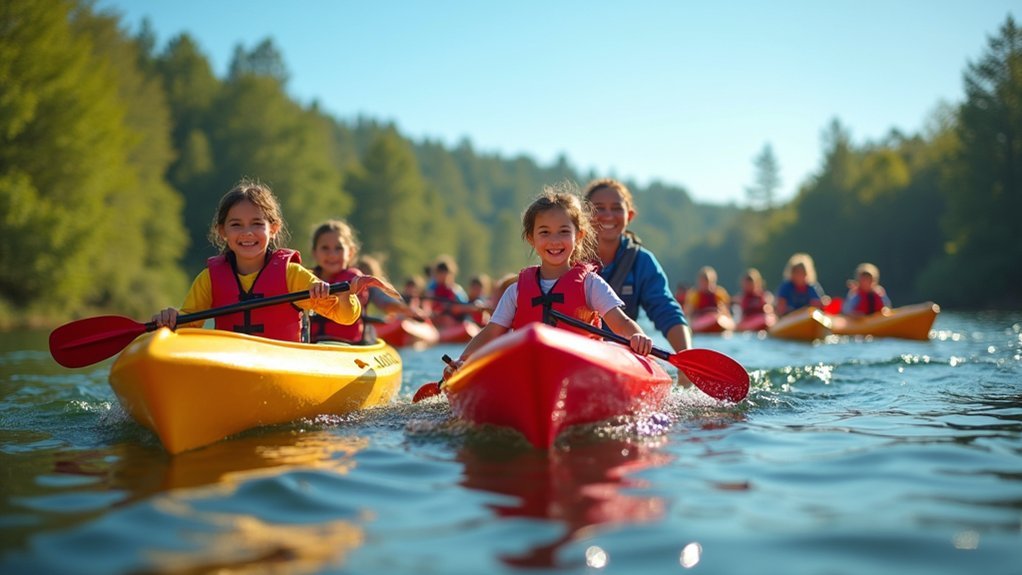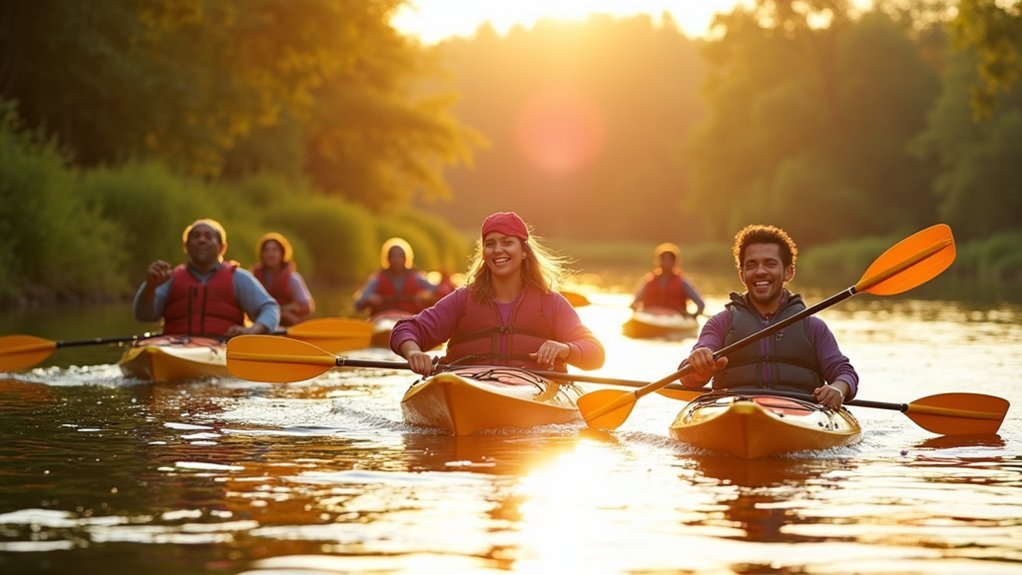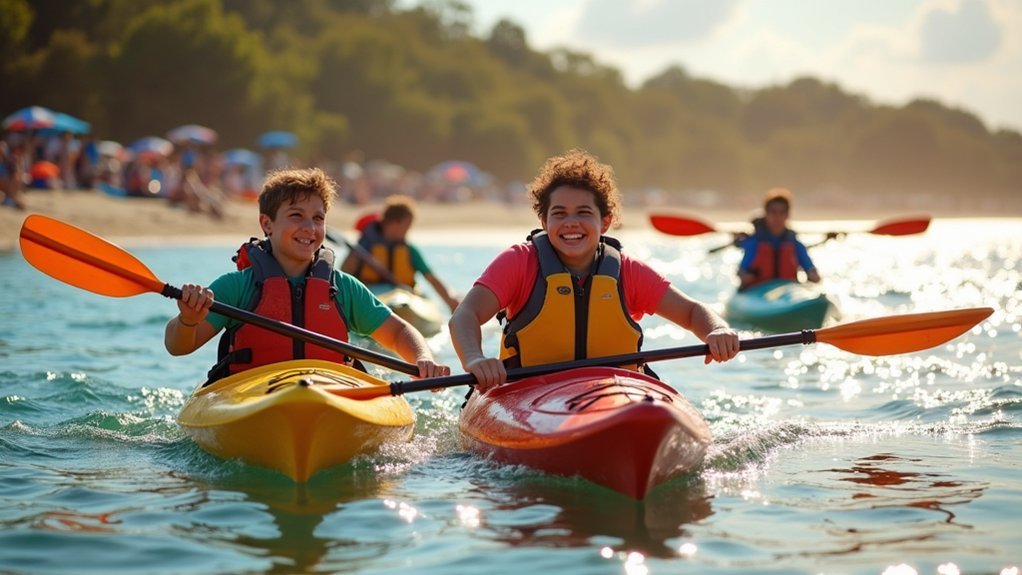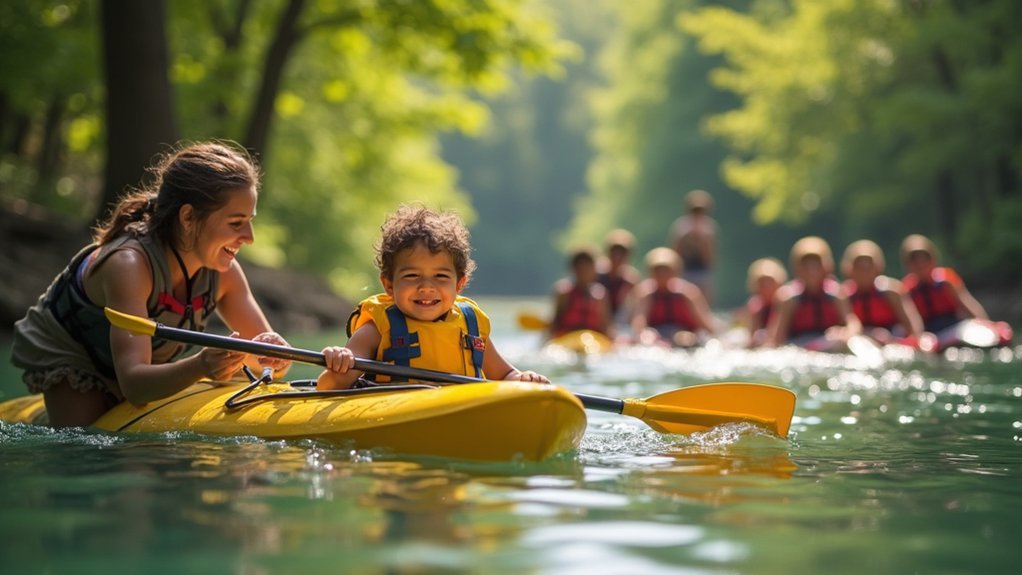Special needs kayaking programs offer individuals with disabilities more than just recreation—they provide therapeutic benefits that enhance physical strength, mental wellbeing, and independence. You’ll find these programs transform waterways from barriers into opportunities through specialized equipment and modified techniques. Participants experience reduced isolation, build meaningful social connections, and develop renewed confidence that extends beyond the water. Discover how these inclusive paddling experiences create powerful communities while changing perceptions about what’s possible for people of all abilities.
Why Special Needs Kayaking Programs Matter

While outdoor adventures provide joy and fulfillment for many, individuals with disabilities often face barriers to accessing these experiences. Adaptive kayaking programs bridge this gap, offering people with disabilities opportunities to explore nature through specialized equipment and modified paddling techniques.
You’ll discover remarkable therapeutic benefits beyond just recreation—improved physical health, enhanced mental wellbeing, and a renewed sense of independence. Many participants experience profound emotional impact, overcoming isolation or depression through these inclusive experiences.
These programs also foster valuable community connections, creating spaces where paddlers of diverse abilities, family members, and volunteers build supportive relationships through social interaction.
With trained instructors ensuring safety, you’ll find these programs aren’t just about kayaking—they’re about breaking barriers and creating access to experiences that might otherwise remain out of reach.
Breaking Barriers: How Adaptive Kayaking Creates Equal Access to Water Adventures
For many individuals with disabilities, waterways and lakes have traditionally represented impassable frontiers rather than recreational opportunities. Adaptive kayaking programs are changing this reality by providing specialized equipment like stabilizing outriggers and modified paddles that accommodate various physical limitations.
You’ll find that these inclusive experiences offer more than just access to outdoor adventures—they foster essential social connections and enhance mental well-being. Organizations now offer adaptive paddling workshops that teach participants how to safely navigate waterways regardless of their mobility challenges.
The transformation is remarkable: disabled veterans overcoming isolation, children discovering newfound independence, and adults experiencing the freedom of water sports for the first time. Adaptive sports like kayaking aren’t just recreational activities—they’re powerful equalizers that break down barriers and create opportunities once thought impossible.
Transformative Benefits: Physical and Mental Health Impacts of Inclusive Paddling

Beyond creating access to waterways, adaptive kayaking delivers powerful health benefits that transform lives in multiple dimensions.
You’ll experience a full-body workout that builds strength and improves joint mobility—especially valuable if you have physical disabilities or arthritis.
When you join inclusive paddling programs, you’re not just exercising; you’re finding freedom and escape. The rhythmic paddling motion acts as natural stress relief, enhancing your mental well-being while reducing anxiety.
Adaptive kayaking programs empower participants by focusing on abilities rather than limitations. You’ll build self-esteem as you master new skills and form meaningful social connections with fellow paddlers.
These relationships combat isolation while creating a supportive community.
The holistic impact is remarkable—participants consistently report renewed purpose, hope, and confidence that extends far beyond the water into everyday life.
Essential Adaptive Equipment: Innovations Making Kayaking Possible for All Abilities
Innovative adaptive equipment has revolutionized kayaking accessibility, transforming what was once an impossible activity into an achievable adventure for people of all abilities.
You’ll find stabilizing outriggers from Creating Ability that provide enhanced safety while transfer benches make getting into kayaks possible despite physical challenges.
The Versa Paddle from Angle Oar reduces shoulder strain, enabling independent paddling with limited strength.
For those with spinal cord injuries or amputations, specialized kayaks from Freedom Kayaks offer easier entry and navigation options.
If you’re dealing with upper limb impairments, the One-Arm Freedom Canoe Paddle provides an effective paddling technique solution.
Even limited hand function doesn’t have to limit your participation in paddle sports thanks to gripping aids from Active Hands that enhance your experience on the water.
Building Community: The Social Impact of Shared Paddling Experiences

When individuals with diverse abilities gather on the water, they discover much more than the joy of kayaking—they find a powerful sense of community that transforms lives. Through shared experiences, participants forge lasting friendships and essential support networks that combat the isolation often experienced by those with disabilities.
You’ll notice how these recreational opportunities bring families and caregivers together, strengthening bonds while everyone enjoys nature’s beauty. The meaningful social interactions remind everyone to focus on abilities rather than limitations, fostering genuine empowerment.
Community-driven adaptive programs instill purpose and accomplishment while enhancing mental well-being. Participants consistently report newfound joy and hope, illustrating how inclusive paddling experiences change perceptions about what’s possible.
These connections become the foundation of a supportive community where everyone belongs, regardless of physical challenges.
Frequently Asked Questions
How to Make Kayaking More Accessible?
To make kayaking more accessible, you’ll need adaptive equipment like outriggers, accessible launch sites, certified instructors, and tailored programs. Don’t forget to seek funding grants and build community partnerships for broader participation opportunities.
What Is the Most Common Injury in Kayaking?
The most common injury you’ll face in kayaking is shoulder strain, which occurs due to repetitive paddling motions and improper technique. You’re also at risk for wrist sprains and lower back pain.
What Is Adaptive Kayaking?
Adaptive kayaking is how you’ll enjoy paddling despite physical or cognitive limitations. You’ll use modified equipment like specialized seats, outriggers, and supported paddles that accommodate your unique needs while ensuring safety and independence on water.
Is Kayaking Good for Mental Health?
Yes, kayaking is excellent for your mental health. You’ll experience reduced anxiety and depression, enjoy endorphin releases, and build confidence while paddling. The nature connection and social aspects also contribute to your overall well-being.
In Summary
You’ve seen how special needs kayaking programs transform lives by breaking barriers and creating inclusive communities. With adaptive equipment, you’re opening doors to water adventures for everyone, regardless of ability. When you support these programs, you’re not just providing recreation—you’re fostering independence, building confidence, and proving that the joy of paddling belongs to all. Your involvement makes these life-changing opportunities possible.





Leave a Reply